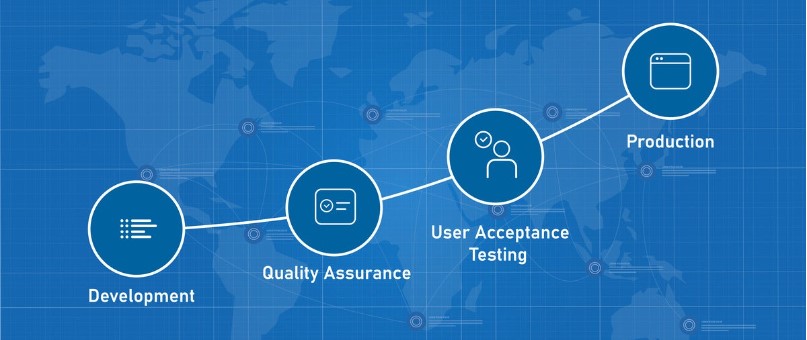As a company, you want to ensure that your product meets the needs of your users. There are several ways to do it, one of the most crucial being User Acceptance Testing (UAT). It’s a process where your end-users test the software to ensure it meets their requirements. But how do you know if UAT is successful? What are the criteria for analysing user acceptance testing software’s success? In this article, we will walk you through the top 7 UAT metrics to measure your success.
What is UAT?
UAT, or User Acceptance Testing, is a type of testing where end-users validate the software. UAT is a unique software testing method that directly involves the users, so you can straightforwardly analyse the expectations. The goal of this test is to ensure the product meets the user’s needs and is bug-free. UAT helps you to identify and fix issues before you release the software to the public after deciding that your product is of high quality and meets the user expectations.
Key metrics for measuring UAT success
By monitoring the user acceptance testing success metrics below, you can ensure your software meets the user’s needs and expectations. These metrics will help you understand the requirements in the ever-changing industry and aim to overdeliver all the time.
#1. User satisfaction
You can measure the success of UAT by the level of user satisfaction. Ultimately, the purpose of any software is to meet the user’s needs and expectations. One way to gauge user satisfaction is by using surveys or feedback forms. They will help you collect valuable insights from users about their experience with the software.
By analysing this data, you will be able to identify areas of improvement and address any issues hindering the user’s experience. Measuring user satisfaction ensures that your software provides value to the user and meets their expectations. With a better understanding of their needs and preferences, you can make informed decisions about the development and release of the software.
#2. Defect density
Defect density is one of the most crucial metrics for measuring UAT success. It is the number of defects reported per line of code by end-users. Lower defect density means better quality code and indicates proper QA work done before UAT.
Depending on the project’s timeline, high defect density is not a great look at the UAT stage. You should track both defect densities before and after UAT: not just the trends but the initial numbers as well. High defect density is a likely reason for your software to fail UAT.
#3. Test coverage
The third metric on our list – test coverage is also crucial for measuring the success of UAT, as it indicates the extensiveness of testing performed on the software. Here, a higher test coverage means you covered not just all requirements (you shouldn’t reach UAT if you didn’t) but also different user scenarios. Proper test coverage means the testing is thorough and comprehensive and reduces the risk of undetected defects.
Achieving a high test coverage is not easy, as covering every requirement extensively may not be feasible due to time and resource limits. Depending on your expertise, UAT participants may come up with scenarios that you never consider. Before that happens, you should prioritise testing efforts based on the most critical and high-risk areas of the software.
#4. Test case effectiveness
Test case effectiveness shows the percentage of cases that have found defects and indicates how effective the testing process has been. A higher test case effectiveness means a more efficient and effective testing process.
By tracking test case effectiveness, you can identify the most effective test cases and optimise the process. It also helps you see and highlight areas where additional testing is required beyond UAT and perhaps after launch as well..A comprehensive testing process ensures the software is bug-free, meets user needs, and provides a positive user experience.
#5. UAT cycle time
Another important metric – UAT cycle time measures the time to complete the UAT cycle, from the start of planning to the end of testing. By tracking UAT cycle time, you can identify what causes the delays and develop a comprehensive strategy to deal with them.
Shortening the UAT cycle will reduce the extra expenses from potentially failing the UAT. It is also a great cost optimisation route for smaller feature-level UATs with the same organisation and UAT for your other projects.
#6. Time to resolve bugs
The time to resolve defects is a crucial measure of your development team’s responsiveness. It represents the time it takes to fix defects identified during the UAT process. By tracking this metric, you can ensure that your team reacts quickly and efficiently to user feedback and fixes issues promptly.
A shorter time to resolve defects means a more responsive team, which users love to see. By addressing defects quickly, you can prevent users from experiencing recurring issues, resulting in a better user experience and increased user satisfaction.
Depending on the contract, you may also be obliged to fix defects promptly found during UAT. If you are in a vendor–client relationship, you usually agree on how many and how severe defects are acceptable to pass UAT. If you don’t have that, resolving bugs reliably and in a timely manner may also help you secure a post-launch support contract.
#7. Value realisation
Value realisation is an essential metric to measure whether the value delivered by the software meets the expectation for that value. This metric is crucial for user acceptance testing, as it is a strong indicator of whether the software is ready functionality-wise.
A higher value realisation means the software benefits the company, increases profitability, improves productivity, and leads to other desired outcomes. By understanding the value realisation, you or your client will make informed decisions about further investment in the software, identify areas of improvement, and make necessary changes to enhance the overall value provided by the software.
Conclusion
So, what did we learn? Well, shortly put, measuring the success of UAT is crucial to understand whether the software meets the needs of the end-users. The seven metrics we provided above can help you quantify user satisfaction and system performance. By keeping these metrics in mind and tracking them throughout the UAT process, you can ensure that your software meets your user’s needs and expectations and provides value to your customers, your organisation, and/or the client that contracted you to create software. .









